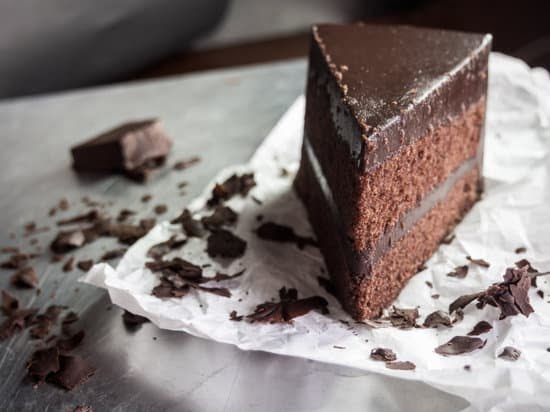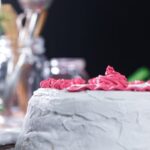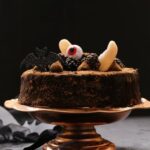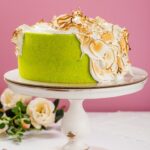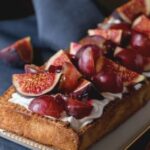Are you looking to add a beautiful and elegant touch to your cakes? If so, learning how to make flowers for cake decorating is the perfect skill to master. Whether you’re a seasoned baker or just starting out, edible flowers can take your cake designs to the next level, and with the right tools and techniques, you can create stunning floral decorations that are not only beautiful but also delicious.
In this article, we will explore the art of cake decorating with flowers, covering everything from essential tools and materials to step-by-step guides for creating buttercream, fondant, or gum paste flowers. We’ll also delve into techniques for painting and dusting edible flowers, as well as creating realistic flower centers and details.
Whether you’re looking to create simple daisies or intricate roses, this comprehensive guide will provide you with all the information you need to add stunning edible flowers to your cakes. So, roll up your sleeves and get ready to impress your friends and family with your newfound cake decorating skills.
Essential Tools and Materials for Making Edible Flowers
When it comes to cake decorating, creating beautiful edible flowers can really take your designs to the next level. Whether you’re a beginner or a seasoned baker, having the right tools and materials is essential for making stunning edible flowers for your cakes.
One of the essential tools for making edible flowers is a set of piping tips specifically designed for creating floral designs. These tips come in various shapes and sizes, allowing you to create different types of flowers such as roses, daisies, and tulips. Additionally, a good quality piping bag is necessary for precise control when piping the buttercream or royal icing for your flowers.
In addition to piping tips and bags, having a good quality flower nail is important for creating delicate flower petals. A flower nail allows you to rotate the flower while piping, making it easier to craft realistic-looking flowers.
Other essential materials include gum paste or fondant for creating more intricate and detailed flowers, as well as edible food coloring and dusts for adding vibrant colors to your creations. Understanding how to make flowers for cake decorating starts with having the right tools and materials at your disposal.
Step-by-Step Guide to Creating Buttercream Flowers
Decorating a cake with beautiful buttercream flowers can add an elegant and charming touch to any special occasion. Whether you’re a beginner or an experienced baker, learning how to make flowers for cake decorating with buttercream can be a fun and rewarding experience.
With the right tools, materials, and techniques, you can create stunning edible blooms to adorn your cakes. In this section, we will discuss the step-by-step process of creating buttercream flowers that will impress your friends and family.
Gather Your Supplies
Before you start making buttercream flowers, it’s important to gather all the necessary supplies. You will need piping bags, various piping tips (such as petal tips and leaf tips), flower nail, parchment paper squares, and of course, your favorite buttercream icing. Make sure that your buttercream is at the right consistency for piping – too stiff and it will be difficult to pipe, too soft and the flowers won’t hold their shape.
Creating Different Types of Buttercream Flowers
There are numerous types of flowers that can be made using buttercream icing. Some popular options include roses, daisies, tulips, and hydrangeas. Each type of flower requires different piping techniques and tips to achieve the desired look. For example, roses are typically made by building layers of petals in a circular motion using a petal tip, while daisies are created by piping small clusters of petals around a center using a star tip.
Practice Makes Perfect
Like any new skill, mastering the art of making buttercream flowers takes practice. Don’t be discouraged if your first few attempts don’t turn out exactly as you imagined. Take your time to study tutorials and practice piping different types of flowers on parchment paper before moving on to decorating your actual cake.
With patience and perseverance, you’ll soon be able to create stunning buttercream flowers that will elevate your cake decorating game. Remember that every imperfection adds character and uniqueness to your creations.
Tips for Working With Fondant or Gum Paste Flowers
Working with fondant or gum paste flowers can be a bit challenging, but with the right techniques and tips, you can create beautiful and realistic edible flowers for your cake decorating. These types of flowers allow for more intricate and detailed designs, making them perfect for special occasions like weddings or birthdays.
To start, you will need some essential tools and materials for working with fondant or gum paste. These include flower cutters, a rolling pin, modeling tools, edible food coloring, and a foam pad for shaping the petals. It’s important to invest in good quality supplies to ensure that your flowers turn out well.
When creating fondant or gum paste flowers, it’s crucial to work quickly as these materials dry out fast. Keep your work surface clean and dusted with powdered sugar or cornstarch to prevent sticking. Also, make sure to knead the fondant or gum paste until it’s pliable and smooth before shaping the petals and other flower components.
When it comes to coloring your fondant or gum paste flowers, use gel food coloring for vibrant and consistent results. Dusting powders can also be used to add dimension and highlights to your flowers. Remember that practice makes perfect, so don’t be discouraged if your first attempts are not flawless. With patience and dedication, you can master the art of creating stunning fondant or gum paste flowers for all your cake decorating needs.
| Essential Tools | Materials |
|---|---|
| Flower cutters | Edible food coloring |
| Rolling pin | Fondant or Gum Paste |
| Modeling tools | Foam pad for shaping |
Techniques for Painting and Dusting Edible Flowers
When it comes to cake decorating, painting and dusting edible flowers can add a beautiful touch to any design. Whether you’re working with buttercream, fondant, or gum paste flowers, these techniques can help elevate your creations to the next level. In this section, we will explore the step-by-step process of painting and dusting edible flowers for cake decorating.
Painting Edible Flowers
One technique for adding color and detail to edible flowers is painting them with edible food coloring. Before you begin, make sure your flowers are completely dry and firm. Use a small paintbrush and carefully apply the food coloring in thin layers, building up the color gradually. You can also use different shades to create depth and dimension in your flowers. Experiment with different stroke techniques to achieve the desired effect.
Dusting Edible Flowers
Dusting edible flowers involves using edible dusts or powders to add a subtle accent or shimmer to your creations. Start by choosing a soft-bristled brush and gently dab it into the dust or powder. Then, lightly tap off any excess before applying it to the flower petals.
This method works especially well for creating a natural-looking finish on fondant or gum paste flowers. You can also layer different colors of dust to create a multi-tonal effect on your flowers.
With these painting and dusting techniques, you can add vibrant colors and delicate details to your edible flowers, making them stand out on any cake design. Experiment with different combinations of colors and textures to achieve the perfect look for your creation.
As you continue exploring the world of cake decorating with edible flowers, remember that practice makes perfect. Don’t be afraid to experiment with different painting and dusting techniques until you find what works best for you and your unique designs. With time and dedication, you’ll be able to create stunning edible flower decorations that enhance any cake masterpiece.
By mastering these techniques for painting and dusting edible flowers, you can take your cake decorating skills to new heights, resulting in show-stopping creations that will leave everyone impressed at any celebration or event where they are served or displayed.GraphicsUnit.
Creating Realistic Flower Centers and Details
When it comes to cake decorating, adding realistic flower centers and details can take your edible flowers to the next level. Whether you are working with buttercream, fondant, or gum paste flowers, paying attention to the small details can make a big difference in the overall look of your cake.
One important aspect of creating realistic flower centers is choosing the right tools and materials. For example, using a small round piping tip for buttercream flowers can help you create perfectly shaped flower centers. If you are making fondant or gum paste flowers, consider using edible luster dust or petal dust to add color and dimension to the center of your flowers.
Another key element in creating realistic flower centers is paying attention to detail. Whether it’s adding tiny stamens to the center of a sugar flower or creating delicate pollen grains with edible paint, taking the time to focus on these small features will really make your edible flowers stand out.
In addition to the centers of the flowers, adding realistic details such as veins on petals or subtle textures can enhance the overall appearance of your edible flowers. This attention to detail is what sets beautifully decorated cakes apart from others and gives them a professional finish.
| Tools and Materials | Details |
|---|---|
| Small round piping tip | Creates perfectly shaped flower centers for buttercream flowers |
| Edible luster dust or petal dust | Adds color and dimension to fondant or gum paste flower centers |
| Tiny stamens or edible paint | Create delicate details for realistic flower centers |
Adding Edible Flowers to Cake Designs
When it comes to cake decorating, adding edible flowers can take your designs to the next level. Whether you’re creating a simple floral arrangement or intricate flower cascade, edible flowers can make your cakes a true work of art. Here’s a step-by-step guide on how to make and add edible flowers to your cake designs.
1. Choose the Right Flowers: The first step in adding edible flowers to your cakes is choosing the right type of flowers. It’s important to use organic, pesticide-free flowers that are safe for consumption. Popular choices include roses, violets, pansies, and daisies.
2. Prep Your Flowers: Before adding them to your cake, it’s essential to properly prep your edible flowers. This includes removing the pistils and stamens from the center of the flower, as well as gently washing them to remove any dirt or bugs.
3. Arrange Your Edible Flowers: Once your edible flowers are prepped and ready, it’s time to arrange them on your cake design. You can create beautiful floral borders around the edges of the cake, scatter petals across the top of the cake, or even create a stunning floral centerpiece on a tiered cake.
By following these steps on how to make flowers for cake decorating and including them into your cake design, you’ll be able to create stunning and eye-catching cakes that are sure to impress any guests at your next event or celebration. With a little practice and patience, you’ll soon be adding beautiful edible flowers to all of your cake designs with confidence and skill.
Troubleshooting Common Issues When Making Edible Flowers
When it comes to making edible flowers for cake decorating, it’s common to encounter some issues along the way. However, with the right knowledge and techniques, you can troubleshoot these issues and create beautiful edible flowers for your cakes. Here are some common problems you may encounter when making edible flowers, along with solutions to help you overcome them:
1. Cracking or Breaking: One of the most frustrating issues when making edible flowers is the cracking or breaking of the petals or leaves. This can be caused by using fondant or gum paste that is too dry or not properly kneaded.
To avoid this issue, make sure to knead your fondant or gum paste until it is smooth and pliable. You can also add a small amount of vegetable shortening to the mixture to add moisture and prevent cracking.
2. Wilting Flowers: Edible flowers made from buttercream can sometimes wilt or lose their shape if they are exposed to heat or humidity. To prevent this, make sure to store your buttercream flowers in a cool, dry place until you are ready to use them on your cake. You can also add a stabilizer such as tylose powder to your fondant or gum paste mixture to help your flowers hold their shape.
3. Color Bleeding: When painting or dusting edible flowers, it’s important to be mindful of color bleeding, especially when using wet colors such as food coloring gels. To avoid this issue, allow your base layer of color to dry completely before adding additional layers. You can also use powdered food coloring for a more controlled and precise application.
By following these troubleshooting tips, you can overcome common issues when making edible flowers for cake decorating and create stunning floral designs that will enhance the beauty of your cakes. With patience and practice, you’ll soon be able to master the art of creating beautiful edible flowers for all your cake decorating needs.
Conclusion
In conclusion, learning how to make flowers for cake decorating can take your baking skills to the next level. By mastering the art of creating edible flowers, you can elevate the appearance of any cake and impress your friends and family with stunning designs. Whether you choose to work with buttercream, fondant, or gum paste, there are endless possibilities for incorporating beautiful blooms into your cake decorating repertoire.
Equipped with the essential tools and materials for making edible flowers, along with the step-by-step guides and expert tips provided in this article, you now have the knowledge and confidence to try your hand at creating intricate floral designs. Remember that practice makes perfect, so don’t be discouraged by initial attempts-keep experimenting and refining your techniques as you develop your skills.
Adding edible flowers to your cake designs not only showcases your creativity but also allows you to personalize each creation for special occasions or themed events. With patience, dedication, and a sprinkle of imagination, you’ll soon be able to adorn cakes with lifelike flower arrangements that will amaze anyone who sees them. So go ahead, get started on your floral cake decorating journey and let your creativity bloom.
Frequently Asked Questions
How Do You Make Fresh Flowers for Cake Decorating?
Fresh flowers can be used to decorate cakes by first ensuring that the flowers are safe for consumption and have not been treated with harmful chemicals. Then, secure the stems in food-safe water tubes before inserting them into the cake.
How to Make Icing Flowers for Beginners?
Beginners can make icing flowers for cakes by starting with simple designs such as roses, daisies, or simple leaves. Using a piping bag and various tips, beginners can practice creating these basic flower designs on parchment paper before transferring them onto the cake.
What Kind of Flowers Can I Use to Decorate a Cake?
There are many types of flowers that can be used to decorate cakes, but it is important to choose edible flowers that are free from pesticides and other chemicals. Popular options include roses, violets, pansies, and lavender, among others. Always ensure that the flowers are safe for consumption before using them on a cake.

Welcome to our cake decorating blog! My name is Destiny Flores, and I am the proud owner of a cake decorating business named Cake Karma. Our mission is to provide delicious, beautiful cakes for all occasions. We specialize in creating custom cakes that are tailored specifically to each customer’s individual needs and tastes.

